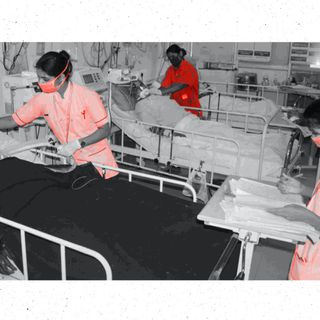The United Nations launched a tool, in association with the World Health Organization (WHO), to calculate the cost of treating girls and women who have undergone female genital mutilation: $1.4 billion a year to treat the resulting medical complications.
The new calculator tool covers 27 countries, mostly in Africa. For some of these countries, the costs would amount to 30% of their yearly health expenditure, WHO said.
Female genital mutilation is the practice of partial or total removal of a woman’s external genitalia, or of injuring the genital organs not for medical reasons, and is a violation of girls’ and women’s human rights, the WHO states. FGM poses serious mental and physical health risks for women who undergo it; the immediate consequences after being cut include infections, bleeding, and psychological trauma.
Yet at least 200 million girls and women in 31 countries, including India, have undergone the violation. In India, a study has shown, 75% of cases are prevalent in the Bohra Muslim community.
“FGM is not only a catastrophic abuse of human rights that significantly harms the physical and mental health of millions of girls and women; it is also a drain on a country’s vital economic resources,” Dr. Ian Askew, director of WHO’s Department of Sexual and Reproductive Health and Research, said in a statement. “More investment is urgently needed to stop FGM and end the suffering it inflicts.”
Women who undergo FGM are susceptible to complications during childbirth, to mental health disorders, to chronic infections, and to pain and other problems when they menstruate, urinate, or have sexual intercourse. All of these conditions need medical attention and care.
Related on The Swaddle:
Do Parents Have The Right to Choose Circumcision, Ear Piercing for Babies?
“High healthcare costs for countries mount because of the tragic personal impacts on women and girls. Governments have a moral responsibility to help end this harmful practice,” Dr. Prosper Tumusiime, acting director for Universal Health Coverage and the Life Course in the African Regional Office of WHO, said in the statement. “FGM hurts girls, imposes lifelong health risks on the women they become, and strains the healthcare systems that need to treat them.”
Estimates show if the practice was abandoned, the countries that were part of the calculation could end up saving more than 60% of their health costs by 2050. However, in the absence of any action, the estimated costs in treating the health effects of FGM will rise by 50% over the same time period, given a growing population and as more girls undergo the procedure.
“Many countries and communities are showing that abandoning female genital mutilation is possible,” said Dr. Christina Pallitto, a WHO scientist. “If countries invest to end female genital mutilation, they can prevent their girls from undergoing this harmful practice and promote the health, rights, and well-being of women and girls.”




